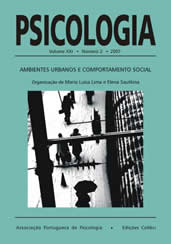Urban Insecurity: space as a mediator of crime opportunities
DOI:
https://doi.org/10.17575/rpsicol.v21i2.365Keywords:
-Abstract
A range of urban problems is blamed for the decline of the quality of life in our cities and towns, which include the increase of insecurity in core urban settings. Urban insecurity, being the fear of crime or the lack of civilitie, has serious implications on the daily life routines and affects the use of public urban space. I tis assumed that crime occurrence is related to the ease and opportunity to commit the action. Opportunity occurs when the ofender meets the victim in a vulnerable circunstance. The lack of (active or passive) surveillance signals increases the opportunity. This paper intends to relate the spatial components to the informal controlo f urban space, i.e., “natural surveillance” and to explore how to maximize its effects. The paper considers two parts: the first one deals with the natural surveillance rationale and how it is realized in space; The second one approaches the debate that followed the publication of the Jacobs (1962) and Newman (1972)’s pioneer work on natural surveillance. Main principles and spatial strategies advocated by Jacobs (1962), Newman (1972), Jefferey (1978) and Hillier (1984) are discussed. It is included that natural surveillance is related to social and physical interaction provided by the urban environment, which in turn is established by means of active and/or passive mediators.


